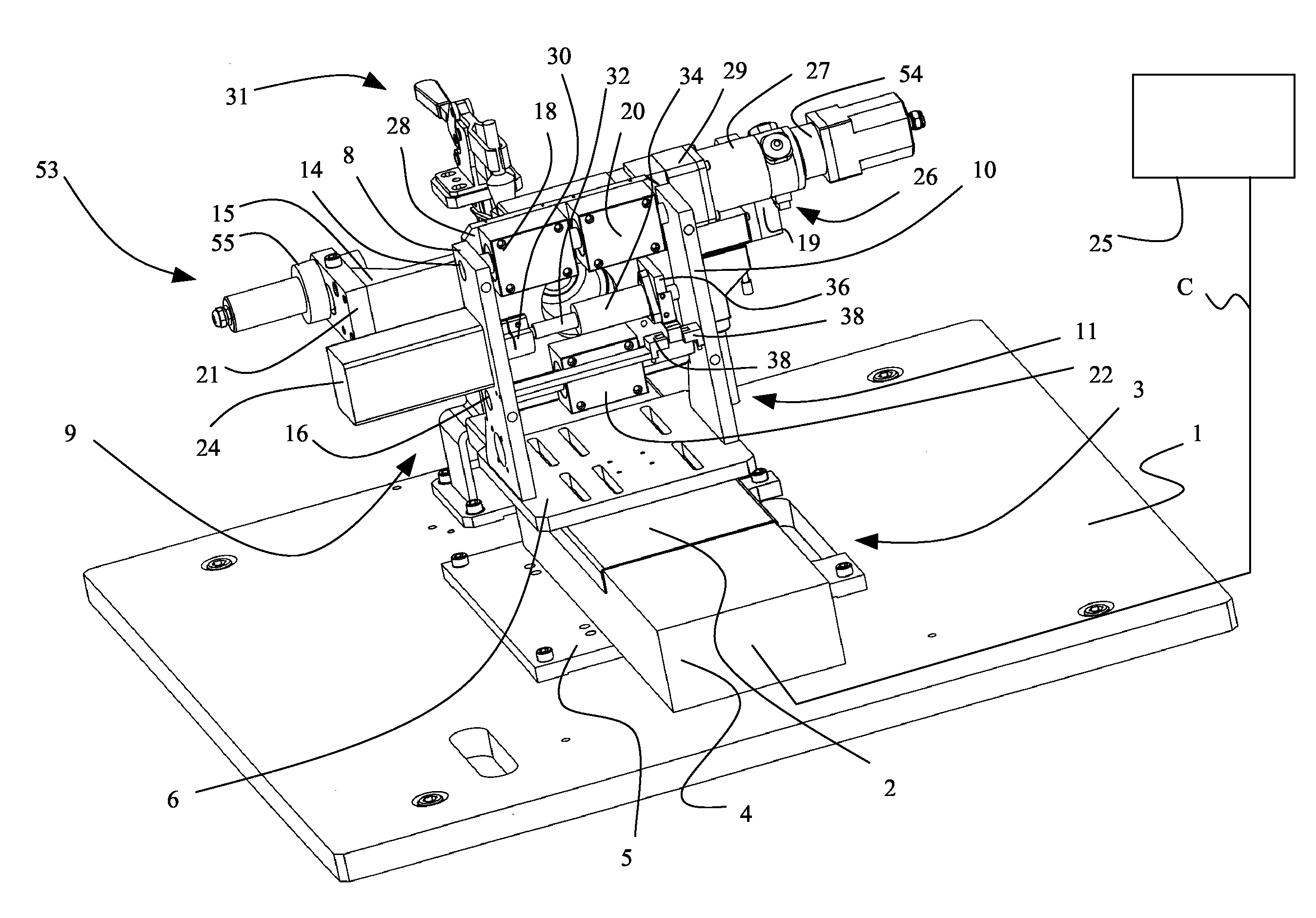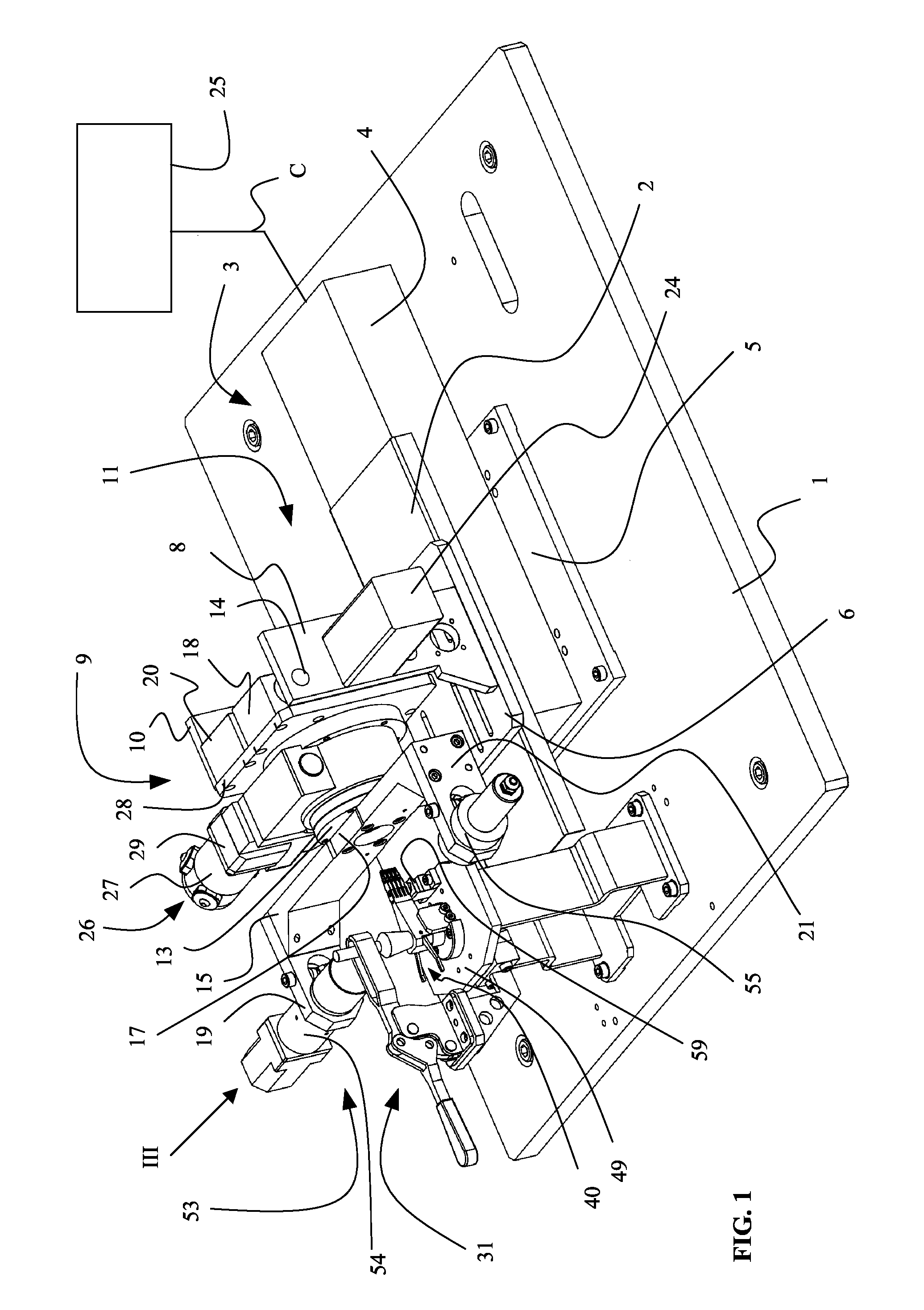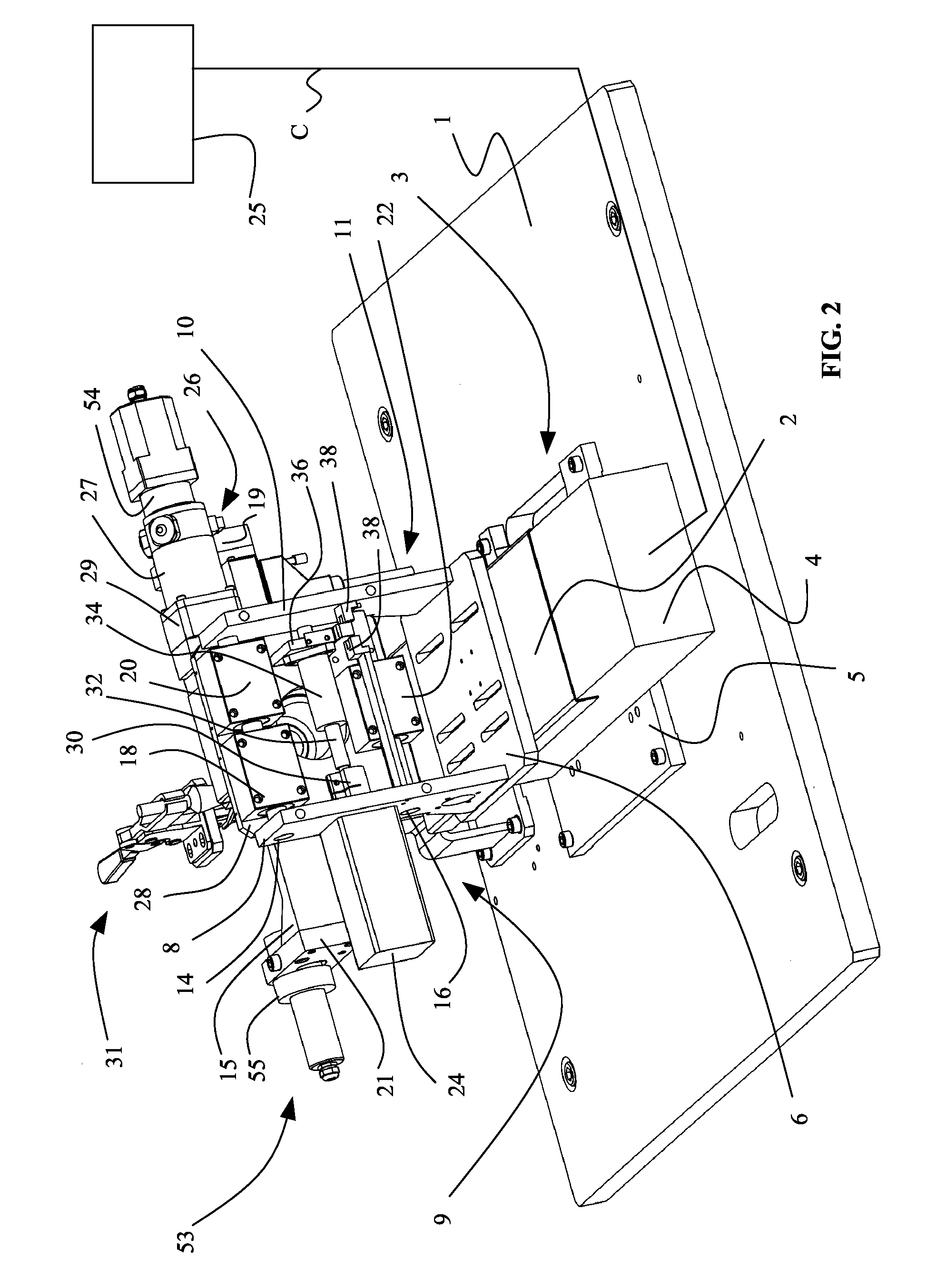Apparatus and Method For Checking Position and/or Shape of Mechanical Pieces
- Summary
- Abstract
- Description
- Claims
- Application Information
AI Technical Summary
Benefits of technology
Problems solved by technology
Method used
Image
Examples
Embodiment Construction
[0018]The optoelectronic apparatus shown in FIGS. 1-2 is utilized for the checking of parts of a mechanical piece with complex shape, more specifically a Head Stack Assembly (“HSA”) 40. The HSA of FIGS. 1-2 is shown in a more detailed, though schematic, way in FIG. 3 and includes an E-block 42 with a plurality of wings 44. Thin plates 46 are coupled to the wings 44 and carry, at free ends, sliders 50. Other details of the HSA, as the read / write heads coupled to the sliders and the gimbals located between thin plates and sliders, are not shown in the figures for reasons of simplicity and clarity. The apparatus shown in FIGS. 1-2 is under many aspects similar to the apparatus described in EP-1029219-B1 (FIG. 1) and includes a base 1 to which there is coupled a displacement system with a longitudinal translation system 3 of a known type that defines a longitudinal axis and includes a support 5 fixed to the base 1 by means of screws. The support 5 carries a protection structure 4 whereu...
PUM
 Login to View More
Login to View More Abstract
Description
Claims
Application Information
 Login to View More
Login to View More - R&D
- Intellectual Property
- Life Sciences
- Materials
- Tech Scout
- Unparalleled Data Quality
- Higher Quality Content
- 60% Fewer Hallucinations
Browse by: Latest US Patents, China's latest patents, Technical Efficacy Thesaurus, Application Domain, Technology Topic, Popular Technical Reports.
© 2025 PatSnap. All rights reserved.Legal|Privacy policy|Modern Slavery Act Transparency Statement|Sitemap|About US| Contact US: help@patsnap.com



